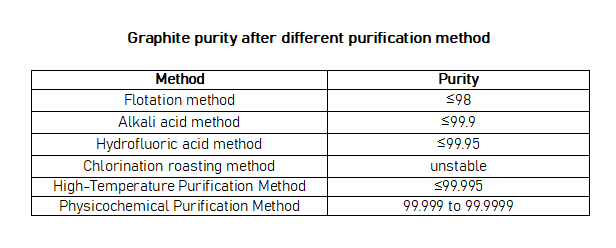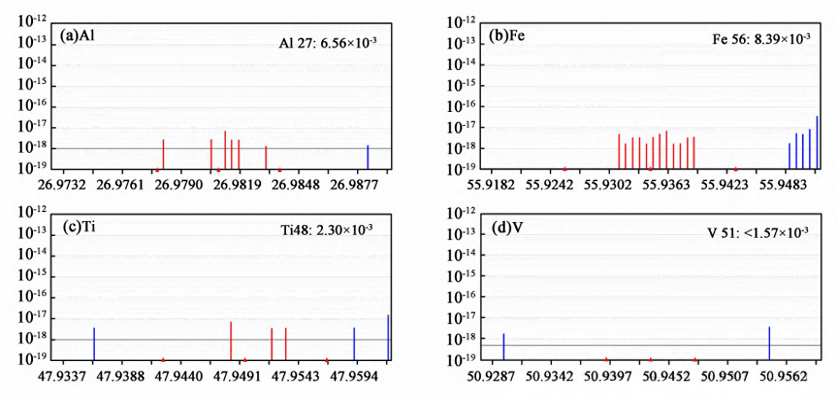
- English
- Español
- Português
- русский
- Français
- 日本語
- Deutsch
- tiếng Việt
- Italiano
- Nederlands
- ภาษาไทย
- Polski
- 한국어
- Svenska
- magyar
- Malay
- বাংলা ভাষার
- Dansk
- Suomi
- हिन्दी
- Pilipino
- Türkçe
- Gaeilge
- العربية
- Indonesia
- Norsk
- تمل
- český
- ελληνικά
- український
- Javanese
- فارسی
- தமிழ்
- తెలుగు
- नेपाली
- Burmese
- български
- ລາວ
- Latine
- Қазақша
- Euskal
- Azərbaycan
- Slovenský jazyk
- Македонски
- Lietuvos
- Eesti Keel
- Română
- Slovenski
- मराठी
- Srpski језик
Purification Technology of Graphite in SiC semiconductor
2024-08-16
Application of Graphite in SiC Semiconductors and the Importance of Purity
Graphite is vital in producing Silicon Carbide (SiC) semiconductors, known for their exceptional thermal and electrical properties. This makes SiC ideal for high-power, high-temperature, and high-frequency applications. In SiC semiconductor manufacturing, graphite is commonly used for crucibles, heaters, and other high-temperature processing components due to its excellent thermal conductivity, chemical stability, and resistance to thermal shock. However, the effectiveness of graphite in these roles heavily depends on its purity. Impurities in graphite can introduce unwanted defects in the SiC crystals, degrade the performance of the semiconductor devices, and reduce the overall manufacturing process yield. With the increasing demand for SiC semiconductors in industries such as electric vehicles, renewable energy, and telecommunications, the need for ultra-pure graphite has become more critical. High-purity graphite ensures that the stringent quality requirements of SiC semiconductors are met, enabling manufacturers to produce devices with superior performance and reliability. Therefore, the development of advanced purification methods to achieve ultra-high purity in graphite is essential for supporting the next generation of SiC semiconductor technologies.
Physicochemical Purification
The continuous advancement of purification technology and the rapid development of third-generation semiconductor technology have led to the emergence of a new graphite purification method known as physicochemical purification. This method involves placing graphite products in a vacuum furnace for heating. By increasing the vacuum in the furnace, impurities in the graphite products will volatilize when they reach their saturated vapor pressure. Additionally, halogen gas is used to convert the high-melting and boiling point oxides in the graphite impurities into low-melting and boiling point halides, achieving the desired purification effect.
High-purity graphite products for third-generation semiconductor silicon carbide typically undergo purification using physical and chemical methods, with a purity requirement of ≥99.9995%. In addition to purity, there are specific requirements for the content of certain impurity elements, such as B impurity content ≤0.05 × 10^-6 and Al impurity content ≤0.05 ×10^-6.

Increasing the furnace temperature and vacuum level leads to the automatic volatilization of some impurities in the graphite products, thus achieving impurity removal. For impurity elements requiring higher temperatures for removal, halogen gas is used to convert them into halides with lower melting and boiling points. Through the combination of these methods, impurities in graphite are effectively removed.
For instance, chlorine gas from the halogen group is introduced during the purification process to convert oxides in graphite impurities into chlorides. Due to the significantly lower melting and boiling points of chlorides compared to their oxides, impurities in graphite can be removed without the need for very high temperatures.

Purification Process
Before purifying high-purity graphite products used in third-generation SiC semiconductors, it is essential to determine the appropriate process plan based on the desired final purity, the levels of specific impurities, and the initial purity of the graphite products. The process must focus on selectively removing critical elements such as boron (B) and aluminum (Al). The purification plan is formulated by assessing the initial and target purity levels, as well as the requirements for specific elements. This involves selecting the optimal and most cost-effective purification process, which includes determining the halogen gas, furnace pressure, and process temperature parameters. These process data are then input into the purification equipment to carry out the procedure. After purification, third-party testing is conducted to verify compliance with the required standards, and the qualified products are delivered to the end user.





